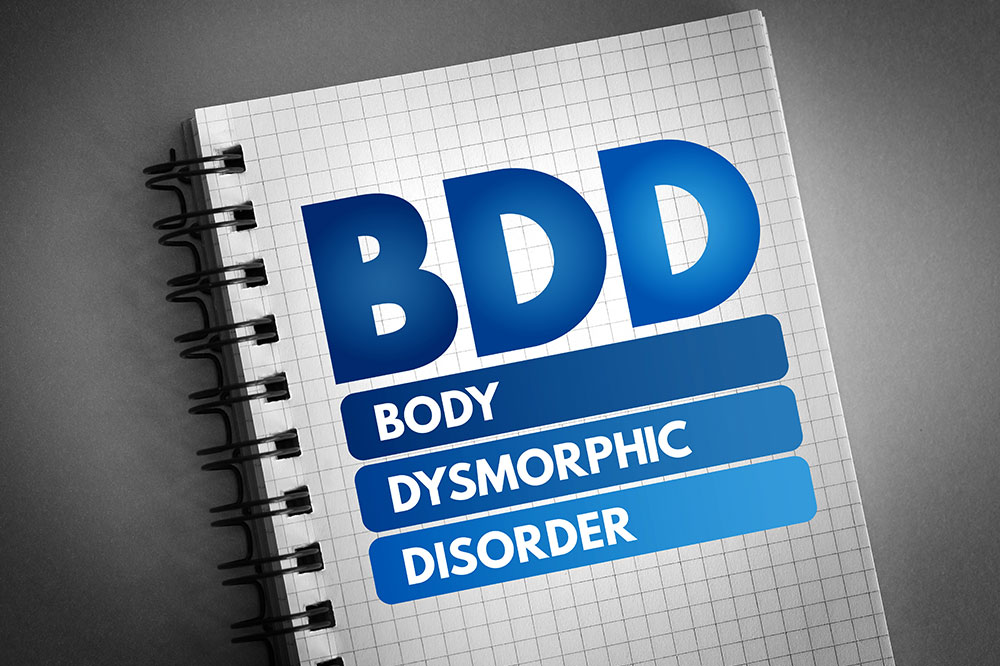
Body dysmorphic disorder – Symptoms, diagnosis, and management
Body dysmorphic disorder is a mental health condition that makes one obsess over perceived flaws in their physical appearance. Also known as body dysmorphia, BDD can make one experience negative thoughts about their body. These flaws may be invisible to everyone except those affected. Further, one may become extremely concerned about their appearance, to the extent that these concerns affect their daily life. Nevertheless, BDD can be managed through a combination of treatments.
Understanding BDD
When affected by BDD, one can experience an obsession with a minor or imaginary flaw in physical appearance. BDD is a fixation that goes beyond occasionally noticing things in the mirror. Usually, others are unable or unlikely to notice the flaw in question. But, when dealing with the disorder, one may find it difficult to believe there is no such problem even when others tell them they look good or that there isn’t a flaw.
Symptoms
An unhealthy preoccupation with one or more aspects of bodily appearance is the main symptom of BDD. It could imply that one constantly compares their appearance with others and struggles to focus on other tasks. Additionally, it may cause social nervousness. Other symptoms associated with the condition are:
- Lack of self-esteem
- Staying away from social settings
- Difficulties concentrating at work or school
- Excessive grooming and pursuing plastic surgery—examples of repetitive behavior to conceal flaws
- Obsessive mirror monitoring, avoiding looking in the mirror, and skin picking, among other compulsive actions
- Changing outfits frequently
- Frequently concerned about the most noticeable parts of bodies, such as the face, hair, and skin
Nevertheless, one with BDD can be concerned about any part of the body, not just the ones that are frequently noticed. So, one could be concerned about the following features:
- Acne or blemishes on the face
- Facial characteristics such as the nose, lips, and eyes
- Hair thickness, color, or type
- Body mass and composition
- Genitalia
One may also deal with muscle dysmorphia. Here, as per the fifth version of the Diagnostic and Statistical Manual of Mental Disorders or DSM-5, one is preoccupied with the notion that their body is too small or lacking muscle.
Diagnosis
Researchers have come up with a variety of questionnaires and tests to determine if one is dealing with BDD. There is no medical test to diagnose the condition. One can take up quick self-tests and answer the questions for mental health experts to gauge the severity of symptoms and confirm BDD. The examination would consist of questions on attitudes and actions regarding appearance. A mental health specialist, such as a psychiatrist, psychologist, or clinical social worker, can help administer the questionnaire. The final diagnosis is based on self-reported symptoms and behaviors. Typically, a physical examination is not required; however, the doctor may want to check for skin damage or hair loss if one is picking at their skin or tugging on their hair. The physician will also want to rule out any additional mental health conditions, such as depression, anxiety disorders, or eating disorders, that may be contributing to the symptoms. Being honest is one of the guidelines to follow when taking a test . Providing the most accurate answers to queries is vital to receive a precise diagnosis. BDD affects people differently, so one should only describe their individual experiences.
Treatment
The most common course of treatment for the disorder is a combination of treatment options. The treatment plan can change as the symptoms improve over time. Here is what doctors may recommend:
Psychotherapy and cognitive behavioral therapy (CBT): Therapy is one of the most common treatment options for mental health conditions like BDD. Psychotherapy is nothing but meeting a mental health professional regularly to discuss the condition and work on individual concerns about physical appearance. Further, CBT can help one learn how to replace negative thoughts with positive ones and change thought patterns that make one obsess over perceived flaws in physical appearance. The treatment option focuses on perception, self-worth, self-esteem, and personality development.
Prescription treatment: Prescriptions can affect the serotonin levels in the brain and improve symptoms of BDD, like reducing compulsive behavior and actions. The option also helps psychotherapy deliver better results.
A prompt diagnosis and timely treatment can help one manage the symptoms of BDD and prevent the condition from worsening. So, it is important to recognize early signs and consult a mental health professional as soon as possible. One has to be willing to seek help and be honest about their feelings to deal with BDD. Further, doctors can come up with a suitable treatment plan based on reported behavior and preferences.




